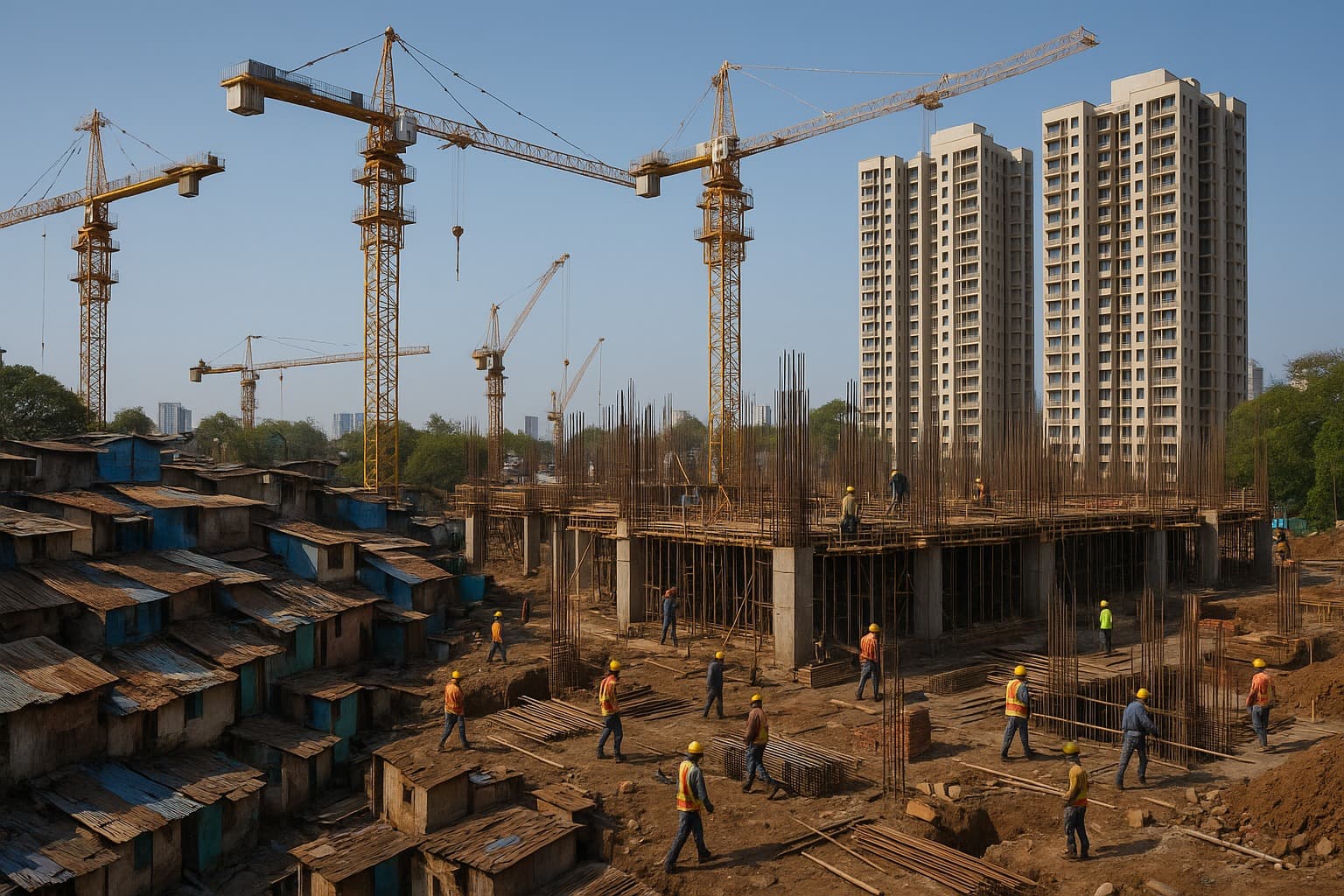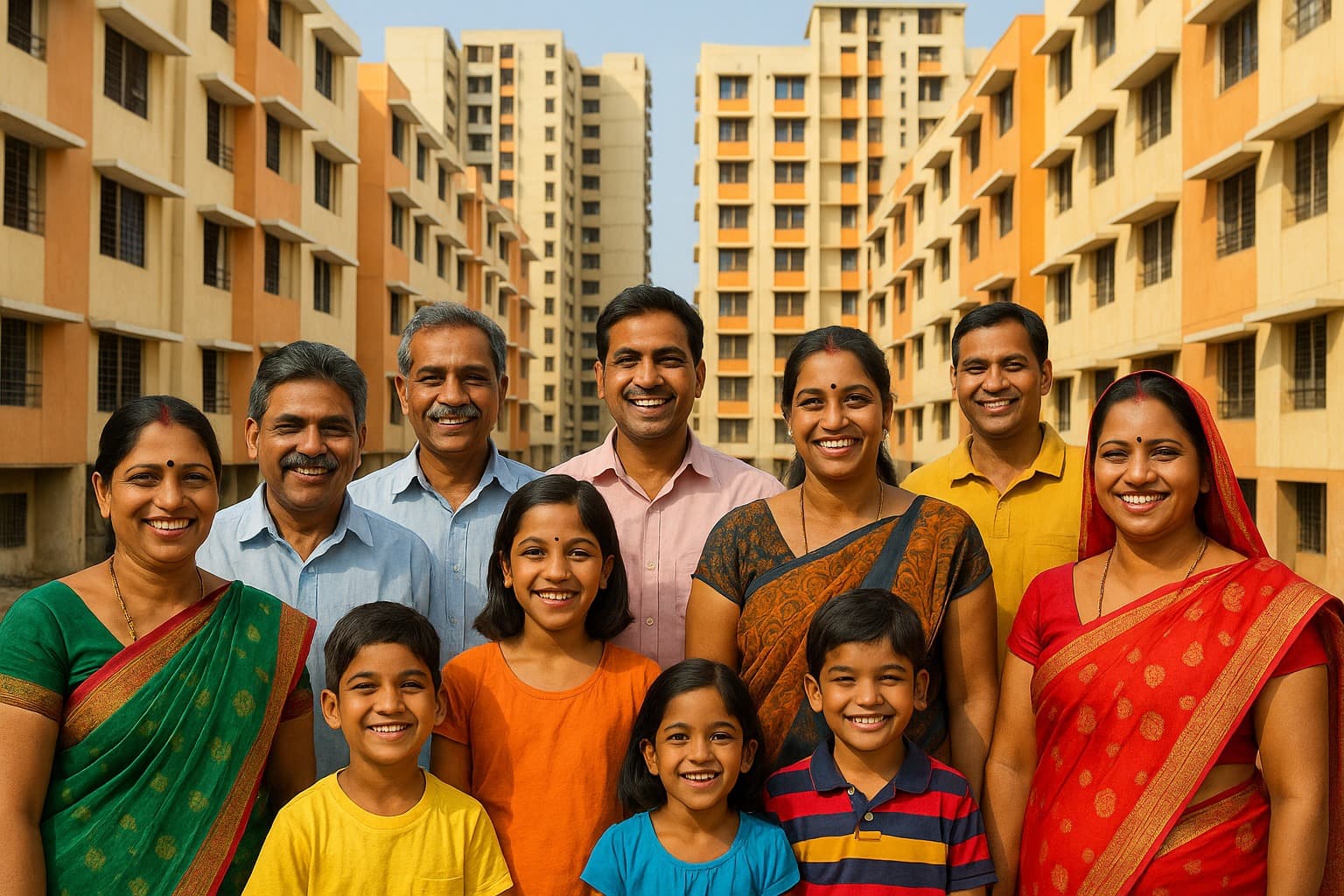Mumbai's Slum Cluster Redevelopment Scheme: A New Dawn for Housing?
Summary
Mumbai's new slum cluster redevelopment scheme aims to transform slums into dignified housing zones. This ambitious plan seeks to integrate marginalized communities, boost the real estate market, and address housing inequality.

Mumbai — a city that never sleeps, a city where dreams rise as tall as its skyline and yet, where millions live in cramped tin-roof homes beneath those glittering towers. For decades, the contrast between luxury and struggle has defined Mumbai’s heart. But recently, that heart received a fresh beat of hope — the Maharashtra government has approved a slum cluster redevelopment scheme aimed at transforming the city’s vast slum pockets into organized, dignified housing zones.
This move marks one of the most ambitious steps in Mumbai’s urban history, targeting to blend social responsibility with smart city growth. The scheme, which aligns with the state’s new housing redevelopment plan for Mumbai 2025, could reshape not only how people live but how the city breathes.
A City of Dreams Divided by Walls of Inequality
Every Mumbaikar knows the sight — dense rows of makeshift homes lining railway tracks, narrow lanes echoing with everyday hustle, and children playing cricket on open drains. These are the communities that built Mumbai, the hands behind its industries, services, and progress. Yet, for decades, they’ve lived with uncertainty — without proper sanitation, safety, or stability.
The Maharashtra government, acknowledging this pressing reality, has approved a cluster redevelopment scheme that aims to redevelop multiple slum clusters together, rather than handling each individually. This approach ensures economies of scale, better planning, and cohesive infrastructure — something that piecemeal projects failed to achieve in the past.
The idea is simple yet transformative: rebuild, rehabilitate, and restore.
What the Scheme Means for Mumbai’s Future
Under the newly approved plan, the government will allow developers to undertake large-scale slum cluster redevelopment projects, offering incentives for infrastructure and housing improvements. Each rehabilitated family will receive a well-designed apartment, complete with proper ventilation, sanitation, and access to essential services like schools, healthcare, and public transport.
For many families, this isn’t just an upgrade — it’s the realization of a long-deferred dream: to live with dignity in the same city they’ve served for years.
The government also plans to bring transparency and accountability into the process, ensuring developers adhere strictly to timelines and quality standards. Urban housing experts believe that if executed well, this policy could boost real estate in Mumbai while simultaneously addressing one of its deepest social challenges — housing inequality.
Economic Boost and Real Estate Ripple Effect
Mumbai’s real estate market, already one of the most dynamic in India, could witness a significant revival from this initiative. With new land parcels being unlocked through slum rehabilitation and redevelopment, developers gain access to prime locations that were previously off-limits.

Analysts estimate that this urban housing scheme could inject thousands of crores into Mumbai’s construction economy. More importantly, it will likely attract both domestic and foreign investments as developers and homebuyers alike regain confidence in the city’s long-term growth.
The Maharashtra government’s move isn’t just about social welfare — it’s a smart economic strategy. By converting slums into sustainable neighborhoods, it enhances property values, improves infrastructure, and widens the tax base. The Mumbai redevelopment drive could potentially create thousands of jobs, from construction labor to retail services, adding a much-needed boost to the state’s post-pandemic recovery.
Challenges on the Road to Transformation
But let’s be honest — redevelopment in Mumbai has never been easy. Past attempts at slum rehabilitation often got trapped in bureaucratic delays, protests, and disputes between developers and residents.
This time, however, the government seems determined to learn from past mistakes. The new policy focuses on cluster-based redevelopment, allowing several neighboring slum plots to be merged under one comprehensive plan. This ensures more open space, better infrastructure design, and smoother coordination.
Still, the biggest challenge remains human — convincing thousands of families to temporarily relocate and trust that their new homes will indeed be delivered. The memories, livelihoods, and community bonds within these clusters run deep. The government’s empathy, communication, and consistency will play a huge role in determining whether this ambitious plan truly takes root.
A Promise of Dignity and Inclusion
There’s something profoundly human about this initiative. It’s not just about tearing down old structures — it’s about rebuilding lives.
For decades, the word “slum” carried a stigma in Mumbai’s vocabulary. But this new cluster redevelopment policy seeks to rewrite that narrative — to turn marginalized spaces into modern, self-sustaining communities.
Under the new Maharashtra government plan, these redeveloped clusters will have parks, schools, healthcare centers, and better road access. The aim is to integrate, not isolate. The dream is to create a Mumbai where one’s postal code no longer defines one’s worth.
A Social and Emotional Shift for the City
Imagine a young girl named Asha, who today studies under a leaking tin roof in Dharavi, one of the world’s largest slums. Her mother works as a tailor, her father as a taxi driver. They’ve heard about “redevelopment” for years but never believed it would touch their lane.
Now, under this slum cluster redevelopment scheme, Asha’s family might finally move into a clean, two-room flat — with a proper window, a bathroom, and a school nearby. That’s more than real estate — that’s renewal of faith.

For thousands of families like Asha’s, this policy isn’t about property prices or government strategy; it’s about belonging, safety, and dignity.
Urban Transformation and the Bigger Picture
The Maharashtra cabinet’s approval signals a broader vision for Mumbai — one that aligns with the state’s long-term housing goals. It complements other urban reforms like infrastructure upgrades, metro expansion, and coastal road projects.
Together, these initiatives are redefining Mumbai’s skyline — not just vertically with skyscrapers, but horizontally through equitable development.
Real estate experts believe that slum cluster redevelopment will pave the way for a cleaner, greener, and more inclusive Mumbai. With strong political will and transparent execution, it could become a model for other Indian cities battling similar housing challenges.
A Hopeful Tomorrow
Change in Mumbai has always come slowly, often painfully. But it always comes. And when it does, it tends to inspire the rest of India.
The Maharashtra government’s approval of this policy might seem like just another urban announcement on paper, but for millions, it represents something far deeper — a chance to rise, rebuild, and reclaim their place in the city they love.
If executed with compassion and accountability, this cluster redevelopment scheme could go down as one of the most impactful housing reforms in India’s history — turning Mumbai’s slum clusters from symbols of struggle into stories of strength.
Because, in the end, every home — whether in a high-rise or a redeveloped cluster — is not just made of bricks. It’s made of hope. And Mumbai, of all cities, has always been built on that.
